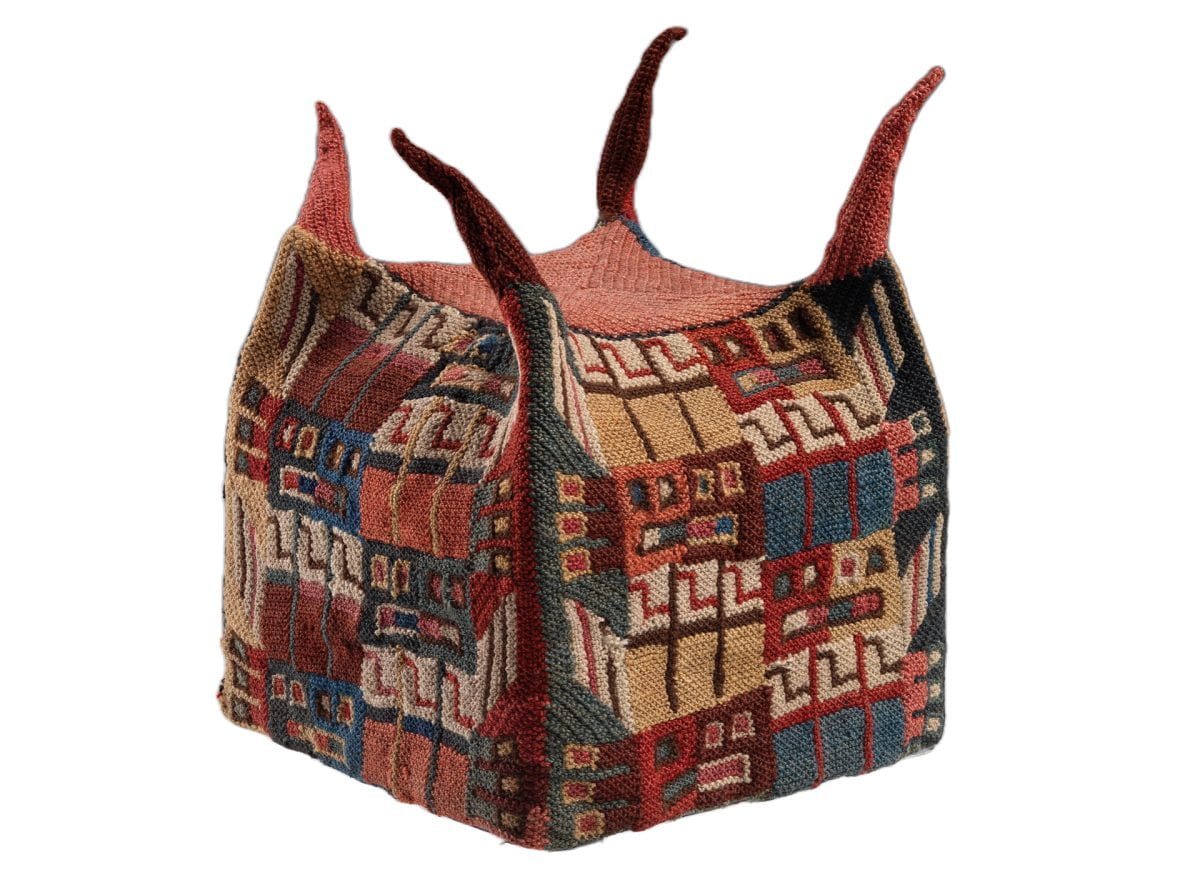During the Middle Horizon period (500-1000), the vast Wari Empire and its neighbor state Tiwanaku were the superpowers of today’s Peru, Bolivia and Chile. Both established distinct cultures and sophisticated political and economic systems. While their exact relationship remains a puzzle, the civilizations shared two features: religious iconography and the production of fine, camelid-fiber tunics and four-cornered hats.
These luxuriously patterned tunics and hats are a delight to behold and were worn by elites to convey authority and status. The hats and tunics were also part of high-status burial collections.
This four-cornered hat was made from camelid fiber – silky and easily dyed – and fabricated in a complex technique, with a single thread knotted on itself to form a tight mesh. That single thread was pre-dyed to result in geometric patterns, faces and animal shapes.
Which is this hat — Wari or Tiwanaku? It is likely Tiwanaku. The Wari usually constructed separately knotted panels for the top, sides and peaks, then joined them together. The Tiwanaku started in the center of the crown and fabricated panels with top, sides and peaks in one piece. Wari often added cut pile for a velvety feel and feathers or tassels to the corner peaks. The Tiwanaku stopped with the intricately knotted mesh for the crown and peaks.


